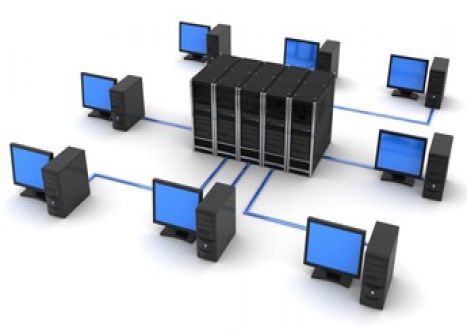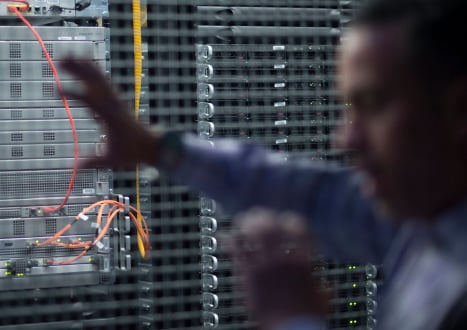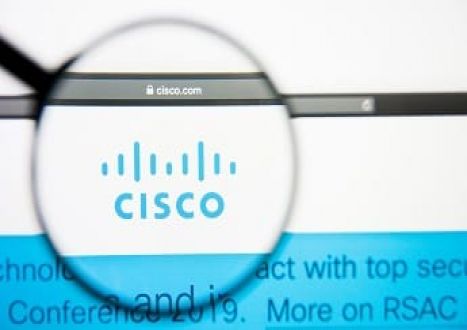- Home
- Video Courses
- Certifications
- 300-435: Automating Cisco Enterprise Solutions (ENAUTO) Dumps


300-435: Automating Cisco Enterprise Solutions (ENAUTO) Certification Video Training Course
300-435: Automating Cisco Enterprise Solutions (ENAUTO) Certification Video Training Course includes 64 Lectures which proven in-depth knowledge on all key concepts of the exam. Pass your exam easily and learn everything you need with our 300-435: Automating Cisco Enterprise Solutions (ENAUTO) Certification Training Video Course.
Curriculum for Cisco ENAUTO 300-435 Certification Video Training Course




300-435: Automating Cisco Enterprise Solutions (ENAUTO) Certification Video Training Course Info:
The Complete Course from ExamCollection industry leading experts to help you prepare and provides the full 360 solution for self prep including 300-435: Automating Cisco Enterprise Solutions (ENAUTO) Certification Video Training Course, Practice Test Questions and Answers, Study Guide & Exam Dumps.
Automate APIs & Protocols
1. 2.0 Automate APIs & Protocols
Alright, so we have successfully completed Section 10. Now we are in Section 20, where we have to learn about automated APIs and protocols. So here you can see that this section is divided into five parts. We have to learn about Jesus in youngmodel XML is a young model and a young module. So what is young and how itworks, what is the data model etc. The different type of functionality that we have in young people is related to youth. So it's not just the young who are the module, but there are others as well. the open-config ITF-native young model, et cetera. So we can do the comparison as well, but better because we'll understand young more and more, so that will help us understand the data model. Finally, in this section, we have 2.5, in which we must learn and understand the net comp and the rest of it. Okay, so let's start Section 20. I have broken this section into several videos, and those videos are easy to follow, but all those videos are going to have a good amount of content and knowledge base.
2. Evolution of Network Mgmt
solution of the networking, managing the devices, and the programmability. We know that the way that we are managing the device,that is still the case that we are managing the device. Here you can see in the diagram that the operating system is They perform manual verification. We are using the Telenet SSH or SNMP methods to log into devices. We can pull different types of information from the devices. When we are doing the troubleshooting, we are using the CLI. still used for troubleshooting purposes. Then we have multiple other tools. For example, we can use multiple tools from SolarWind, or there are many vendors that have tools related to tracing routes, or maybe to understanding or doing some sort of visibility. In terms of Netflix and other built-in mechanisms on the devices, One of the key roles that we have with SNMP in the existing network is to manage the network devices. One good example is the SolarVin tool, which, along with the Orient Solar Wind tool, has polys everywhere we're doing this and MPconfiguration, as well as an inbuilt MIB that's against the database. Again, consider one type of object that has MIB-related code, such as "manage information base." And from that, we are using some sort of kit method, and then retrieval of data is happening. Now, there are a lot of disadvantages to SNMP. Although it has been running for more than 25 years, SNMP is a simple network management protocol that manages the entire IT infrastructure. This is good as well. But the capability of SNMP is not that huge. It's okay that we can have the inventory; we can check what interface is going up and down, what protocol is going up and down, etc. But there are a number of limitations we have with SNMP. So I'll list all the limitations that we have in SNMP one by one. Again, when we are talking about CLI, this is for humans; this is not for machines. While the APIs are built for machines, that's something like machine-to-machine language. But on the other hand, it's very easy to read as well. So not only the machine but also humans can understand different types of APIs and their formats, starting with SNMP, which evolved or developed in late 1980 and was doing its job. We know that we have SNMP versions one and two, and now we have version three. That's quite secure. But version one and version two are community based.SNMP means community. You can think at this point of time about some sort of password-based system and wonder who is taking the information or who is following the information from the networking devices. Alternatively, we can also push the configuration. We can push the script, as well, from the SNMP server to the networking devices. But still, the method that we are using is quite fixed, and this legacy So let me quickly list all the disadvantages that we have. With SNMP, we can see that SNMP is in use. So let me quickly highlight this usesa Get request to receive variable. That Get is merely a type of show. Like we're typing "show," and show is equivalent to "get." You can think in the API world. Now here you can see the limitation of S MP, which is that versions one and two are loosely secure. They are not 100% secure. It is not built for real-time communication. That's true. So it has the polling interval, and sometimes it will take 15 to 20 minutes to just get the information. That's what happened in the network infrastructure. It lacks a writable MIB. So all the MIBs are fixed. Again, the vendor will create the MIB, and again, with the OS patch or code, the MIB will get updated. So it's not that you can write the map and then upload it. Okay, so that's the problem we have: the window lock is writable, and it's difficult to replay or roll back the configuration. It won't have a library. So for me, these are the biggest disadvantages, maybe because of the lack of a library. Like, for example, Python, you can have the libraries, use multiple libraries for different types of devices, and then use them inside the code. That is not the case for the map. And the skill factor is missing, the security factor is mixed, and real-time monitoring is missing. So those are the disadvantages we have with the existing networking model. And, at the enterprise level, many companies are developing API-based or network-confirmed monitoring or management systems. So it's not that these things are not in use, they are already in use. Along with SNMP, you may find it used in some places, while others may use a combination of SNMP and other resistAPIs or programmable tools. Some places, you'll find that 100% programmable tools are in use. For example, in 2015, Google announced it intended to disable SNMP for monitoring by 2017. So big companies like Google or say for exampleMicrosoft or those type of networking giants, they arevery prone to the real time informations. So a 15-minute delay or 10-minute delay is a big lag, and they don't want to do that. As a result, Google and the early stages of large corporations have real-time monitoring of the system. And that is again a system based on programmable modules or different types of APIs: rest, API, XML, APIs, etc. Dr. All right, so these are the problems we have with SNMP. We have restrictions, we have locks, we can't scale security, et cetera. To address this, we are departing from the existing network. You can see that most of the company is still using this type of networking solution to manage their networking devices in the next-generation configuration management system. When we talk about the next generation management system, the goal is to handle machine-to-machine communication correctly, and the high points we have at this time are to provide an easier-to-use management interface and support client-side validation and error checking. Again, that's the big thing. So we validate the client-side validation and error checking, we have separate configuration and operational data, we have built-in backup and restore capability, and we are friendly to both humans and machines. Now, the moral of the story is this: when we are using the programming interfaces, we are again using the next generation of management tools. So at that point of time, what is happening is that there are so many things that we already know. Those are the problems with the existing SNMP-based management system. So when they created the new programming interfaces or management tools, they knew all the existing problems and then created this system with those problems in mind. So that's why we have the support, client site validation, error checking, management interface backup and restore capability, et cetera. These are just five or six points that you're seeing here. But apart from that, the biggest advantage we have in terms of programming is that you can create or use the existing libraries at some point in time. If some companies—for example, Palo Alto—will write the libraries and the Python scripts, et cetera, we can reuse that code inside our infrastructure. Again, the other example is Cisco's using To check that list of APIs, you must enable the Ersexternal Restful Services. However, if you look at the Cisco Ice programming infrastructure, you'll notice that they've already been given a number of Python scripts or other scripts to monitor the device from the scripts to monitor these devices from the programmable interfaces. Likewise, you'll find that in SDWAN, we have N numbers of APIs. In Cisco.ACI, we have a number of APIs. So all these companies now, whenever they are launching their product, are giving it the risk of API integration, even panels. Now they are supporting risk APIs as well. They are also supporting XML-based APIs and Rest APIs as well.Keeping this in mind, if any number of devices in my network support the same type of risk-based API, it means that the same type of programming structure or structure can be used on a number of devices. That is the consistency with which we manage the devices via the programming interfaces.
3. Model Driven Programming
All right, so what is the solution? We saw in the previous section that networks are evolving, with traditional methods such as SNMP and others being used to manage network devices. On the other hand, when we use programming interfaces, when we use programmable glue to manage networking devices, we are dealing with model-driven network programmability. So, the question here is whether model-driven network programme capability or programming is the solution, or whether the modern way to manage the entire IT infrastructure is. and the answer is yes. Why? because this is independent of network devices. So we have the Cisco Juniper Awarrantor or any other vendor device; all of these devices nowadays have a programmable chip, they can understand the program, and they can understand the application. Most of the networking devices nowadays can understand the applications as well. And they are built in a way that they can integrate with the cloud and the virtual world as well. Now, the answer is yes; with the programmable interfaces, we can manage the entire interim. Now, the next very important question here is: how and what will be the format of the programmable interface that we are going to discuss now? So now you can see that instead of CLI and Telnet SSH, we have the open APIs, the open transport protocol, the open data format, and then we have the various types of standardization. Again, as previously discussed, we now have a number of libraries that can be supported within the programmable interfaces. That is why it's not possible in the SN MP-based MIB because it's very fixed and very difficult to scale. So now the next very important question is: what will be the format? Say, when you are managing the device either with SNMP, CLI, or SSH, you are logging in to the device, making some configuration changes, and then getting certain output. But in the case of a programmable interface or programmable management world, the answer is this particular slide. So now you can see that you have your application on top. So let me try to highlight this. So we have the application here at the top, waiting for the app to appear, and then we have the bindings. So we have a model-driven API development kit, and the below four are very important. So what protocol is it supporting? It supports network configuration net confc.Now, here you can see that NETCONF can understand the encoding of XML. So here's the important part: we frequently see netcom restaurant CRP, XML, and JSON and are unable to fix it. That's exactly where it is going to be used. So from this diagram, you can understand that the protocols are NETCONF, REST, Corp, and gRPC. They are encoding formats. So NETCONF can understand XML rather than RESTCONF and understand both XML encoding and JSON encoding. In an upcoming section, you'll learn more about XML and JSON, and we'll do the lab as well. Likewise, the gRPC can understand JSON. What is the mode of transportation now? What is the model of the transport SSH, TLS, and https://2? model is the data model. Now you can think of this and correlate it with the TCP layer, where we have the physical layer, the Italian layer, the network layer, etc. To correct that, it's the Internet layer and then the upper layers. So here, if you go from bottom to top, that is the model. Then comes transport, protocol encoding, and app binding. So the model is the data model, the transport is TLSS-encoded XML and JSON, and the protocol is netconfrest conf in gRPC. Correct. So now we have the answer related to this question. That's okay, since you're going to use the network programming interface. How are we going to log in to the device? If you need to configure a device, such as SDWAN, SDWAN we manage controller, they will use netconf to push the configuration. Obviously, behind the scenes, the devices have their own data model. So whenever we are doing the configuration atthe level of GUI, that can be convertedto some machine language and then that canbe pushed to the end devices, correct. So this is the way that netcon, behind the scenes, can use SSH and then go and configure the devices; netcon will go and use XML and then the transport protocol and then the data model. All right, so what we are going to do in upcoming sections is that we'll go and learn more about JSON and about XML one by one. Okay? So again, I have given this diagram one more time because this is very important to learn and understand. So let's stop here and nextsection will understand, learn about Jason. And we'll have to do the lab related to that as well.
4. JSON
Let us learn understand about JavaScriptobject notation insert that's JSON. We now know that the encoding formats XML and JSON exist. So let's learn about JSON. If we remember PythonDictionary, this JSON is very similar to it. There is also one difference between Python's dictionary and JSON, which is that JSON supports name-value name value pair.But the Python Python Dictionary, theyare having the key value pairs. So that's the thing: we have name value versus key value. However, once we understand either Python Dictionary or JSON name-value pairs, we can easily distinguish one from the other. So if you understand one, you can understand the other as well. In this example, you can see that we have the programming started here with the API, and then you have the name and value. So type "Club" version one, two, sid, UC, et cetera. So in this way, that can be formatted, meaning the JSON programme can be formatted. Now, we have several examples here as well. I will show you in a while. JSON is nothing more than data in coding format. So we have XML and JSON. It's an easy-to-understand format, because if you go and check the program, and I'm going to show you a few of the examples, you'll find it's very easy to understand because it is associated with the name and the value, and because this is easy to understand and because this can be natively called inside Python, As a result, JSON's usability and use cases are vast. So, what I'm going to do here is first of all, let me go and run one of the programs. Here you can see that we have one programme called "Facts," and then we have the host team Texas, etc., So let me quickly go and run this programme in my automation tool. Let me exit from here. So we are inside the automation tool. I can go and create this or run this as a script as well. So, if I want to do that, I can create, say, nano and say PY. I want to import the JSON. And then we can go ahead and give it to them so they can make the program, correct? So let's do this. What is that? You don't need to give in multiple lines; rather, you can go ahead and give like this. So, I only have three, and then I can close my parentheses. Let's go and add the value. Now here you can see that when we are writing thisformat for Jason, you can see here that start with thisand then you should give the colon and then you shouldend like this and then the comma, correct? So now let me put the value: say the hostname is NSX, NX, or OSV, and then a comma. So this is the format for the Jason, the name, and the value we are giving. We can check the OS. For example, I can go and give the OSA dot, and I should use it like this: 80, and then finally, we have the final value. That's the location. So I can provide a location, which is San Jose. And that's it. Now we should close this parenthesis and as programming thingsthat you should start and end in the symmetric. Now, if I go ahead and print this, and I should use the bracket here, this is what I want. So printing this program So let me save it and let's run this Python script with three SC PYs, and here you can see we're getting the output like this. But what I am interested in showing you is this—and before coming here, I should copy this program. So let me exit from here, and I can show you this program. So this is the programme that we have. And I can go to the library. And you can see here that the programme we used allowed me to give it to you line by line. So now, here, you can see that it is printing this program. And then we have the name and the value. Now, if I go and check the type for the facts here, you can see this is the dictionary. Now, what I want is to convert this into the native Python programming for ou can seeYou can see that it's in a dictionary format. What? I can do that. I can go and fax one, which is to say I can give JSON. So we have the keyword, like thumbs and load. I'm using this thumb here. and what I am doing. Let me exclude this programme and then I'll explain the same type of format, although we have used it earlier in the networking automation programmes as well. Now, here, you can see the difference. And now that I've checked the type and type for the fax one, So clearly, you can see that we have converted the JSON dictionary. And actually, it is the native form inside Python's dictionary; the string street can be converted to the STR with the help of the dumps command. And that's why we are using the dumps. And then we have the indentation of four here. So the output will look like good. Okay, so that's the key thing that we've discussed about Jason, and we'll discuss more and more about that as well. So here, you can see it's very easy to use. and Cisco devices. For example, Cisco's next devices They are using the JSON format inside the Nexus OS itself. So, next, I'll log into the Nexus device and demonstrate how it will be used within the Cisco Nexus device. All right, so again, the same thing that I have shown you in the example you have? Now, what I can do here is I can go to the Nexus device, and then I can show you the host name. And I'd like to show you this host name in JSON format. Correct. So again, you will see that Cisco is natively using JSON format as well. So we can use pipes and then JSON, and you can see the name and the value output. Now, what's the use of this? The use of this is that once I have the JSON format, then I can use the same JSON format to create my Python program, correct? So, for example, when we check the show will and brief and then the JSON, it tells us what the name and value are. Likewise, the same concept—for example, key and value—can be used inside our own Python program, correct? And that's the interesting use case. We have one versus the other. So here, you can see that we have the VLAN output. And I'm going to run on the Nexus Device that is there in the GNS. So let me quickly go and open that device. All right, so what I'll do here is I'll exit from here. First of all, let me quickly do the SSH to the Nexus device. I have this Nexus over my GNS, and I can, for example, show the host name and then the JSON format. and here you can see the name and value. Like that, I can go and use the VLAN brief and then the Jean. And here you can see I have created two other VLANs, VLAN 10 and VLAN 20. Let me increase the space here so you can see it properly. All right. So here you can see the format that we have, the default vlan-blank one. And clearly, we have the key and the value. Key and the value So VLAN shows a brief VLAN ID for this, and then we have the actual VLAN that is there in the system. The name is then set to "default." We haven't given any name. Then the state is active; no shutdown. So all the VLANs are in the state of "no shutdown." Likewise, you have the VLAN 10 and VLAN 20 names. And this is a system-generated number. So when we are going to use this inside the program, inside the Python program, we should use the same type of format that we have. So this is the example related to Python. So we can go and use ID name and state, ID name and state, and we can create our dictionary that can be used inside the Python program. All right, so let's just stop here, and in the next session we'll learn a few of the examples about JSON.
5. XML
Next up, we have Extensible Markup Language, or XML. Now, there is a difference between XML and HTML, although you'll find that HTML and XML look very similar. But there is one basic difference. And the difference is this: the XML is designed to describe the data. And that's the key I want to highlight here. Allow me to quickly highlight. So here you can see that XML is used to describe the data. On the other hand, HTML is for displaying the data. And that's one of the reasons we are using HTML code to build the websites. Although the XML code we are going to use inside the Python integration or inside the API integration, et cetera Okay, so here you can see the main difference: one is to describe and one is to display the data, although the look and feel are almost the same. So the code will start like this. Again, let me go and highlight this. You can see that it will start with the brackets. And when you're done with it, it'll go and end with a bracket and slash. So any of the code that you are seeing here, say, for example, Ins API, is going and ending here at Ins API, and inside that we can have some small code as well. So, if you start with those codes, they will also go and end like this. For example, let's say outputs. You'll find that outputs will also go through and close here. Then you can see the body. This is the closing of the body; this is the starting of the body. Now, in between those two, we can put various information, and then those information can be called inside any program. For example, a Python program. So for that, I'm going to show you the example as well. So we have done the comparison with HTML. HTML is to display; XML is to describe the data. On the other hand, if you go and do the analysis or the comparison with JSON, we'll find that JSON is much more human readable correct.And XML is not as human-readable as JSON. But still, the use case is big. Again. If you are studying Palo Alto Firewalls, you can check out Palo Alto Firewalls. They are supporting XML-based APIs. So those APIs that encode or support the XML format—again, it is highlighted here that XML, on the other hand, is used to describe the data— So, how are we going to go about building the programme and integrating it within the Python language? that I want to show you next. So let me go and open my automation tool. All right, so I'm inside my automation tool, and here I can show you an example related to XML. The better way I can show you this is like this: So here you can see that a note will start, and then a note will go and end like this. Then in between, if you want, you can have the headers and footers. Those are terms that we are generally using in HTML code, but also in XML also too.And inside that you have the information from inside thatyou have the information reminder and then the body. Okay, so this is one of the general formats that we have related to XML. I have another example as well. Say, for example, movies dot XML. This is the data that I'll be referencing within the Python programming language. So you can see that collection selling, say, new arrivals, and if I go and show you, you can see that collection closing. So the starting point for this programme is collection, followed by a movie. And then again, you can see this movie, and they're getting close. You can think like this: you have a main program. Inside that, you have a small program. If I start typing, it has local scope here. So type comes to an end here. Once again, the format is the year rating in stars. So likewise, we have created the movie title "Enemy Behind," and this is the description and the detail about that movie. So it is ending here. Like that I can go and create thatinformation for the other movie then other movie. So we have four movies here, and you can think that the database of four movies we have here Then I want to go and call inside my Python program. So if I can go to the Python programme here, you can see again that this programme is a little bit bigger, but you can understand that first of all, I have to go and create the handler. And again we have the integration of XML with SAX. Sax-sax is another dynamic form that can be integrated with XML. So first of all, in this program, what we're doing is having the class and the definition inside so that we're not calling anything at this point in time. So we have the class here: movie handle. Again, you can see that we have the definition start element and then the definition end element, as defined. And by the end of this program, you can see that we are calling that XML. That is the movie XML. So what this programme will do is go and use the Python program, but the input will be the movie XML, and then it will print all those movies that we have in the list. Now, I have taken this example from the URL here. If you want to know more about this, you cango and check this particular URL on the top. All right, so let's go back and run the Python program. So I can go here and I can run the movies, and here you have the result. So you can see that the movie Behind Enemy Line and all those movies are now in a human-readable format, as opposed to the movie file, the original movie file that we have, which is like this. So here you can see that this is the XML format. And then we ran our program, and then we have the human-readable format. We have all this XML file inside the Python program, and then it resides like this. So please go to that particular link that I'm showing here, and then you can check the reference related to Sax. And then there are different types of handles that we have, plus the class functions. The rest of the things we already discussed—that is, the things we have discussed about the loop condition—are very much the same. Whenever you run any type of complex Python program, you have to specify the conditions and loop. So multiple things or reputations will happen inside the loop.
Student Feedback
Similar Cisco Video Courses





















































Only Registered Members Can Download VCE Files or View Training Courses
Please fill out your email address below in order to Download VCE files or view Training Courses. Registration is Free and Easy - you simply need to provide an email address.
- Trusted By 1.2M IT Certification Candidates Every Month
- VCE Files Simulate Real Exam Environment
- Instant Download After Registration.
Log into your ExamCollection Account
Please Log In to download VCE file or view Training Course
Only registered Examcollection.com members can download vce files or view training courses.





Add Comments
Feel Free to Post Your Comments About EamCollection's Cisco ENAUTO 300-435 Certification Video Training Course which Include Cisco 300-435 Exam Dumps, Practice Test Questions & Answers.